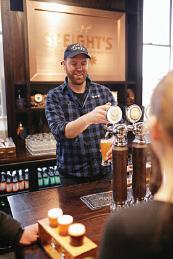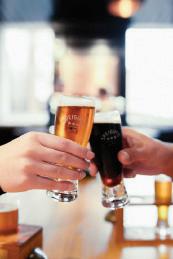


























“No man was ever wise by chance.” (Seneca)
It was interesting to read Matt Heath’s responses to the Big Ask questions in this issue.
Following his career arc from Dunedin band Kid Eternity in the early 1990s through Back of the Y Masterpiece Television a decade later, you wouldn’t expect stoic philosophy.
But clearly there’s been an accretion of wisdom over the years that belies his media personality. Those ideas have been funnelled into Heath’s new book, A Life Less Punishing, which looks like a worthwhile read.
His search for something more meaningful amidst the noise of modern life will resonate with many.
As a prominent New Zealand politician recently said, everyone they talk to these days is exhausted. It’s clear that many people’s lives are severely out of balance, and generally not by choice.
With overwhelming demands on time and resources just to survive, it’s become too easy to lose sight of what’s most important.
While a hard reset is impossible for most, small incremental changes can gradually carve out a calmer space to exist in.
A place where the noise becomes a tolerable background hum, and life can be enjoyed rather than endured. Gavin Bertram, Editor
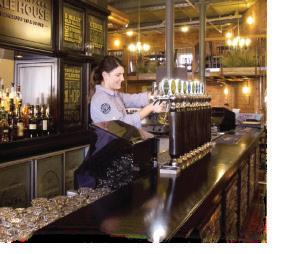
EDITOR
Gavin Bertram
gavin.bertram@alliedpress.co.nz
DESIGN
Mike D’Evereux
ADVERTISING SALES MANAGER
Nic Dahl (03 479-3545)
nic.dahl@alliedpress.co.nz
CONTACT
Email: south@alliedpress.co.nz
Online: www.southmagnz.co.nz
Digital edition: issuu.com/alliedpress
Facebook: @SOUTHMagNZ
Instagram: @south_magazine_nz
WHO WE ARE
EVEN over 24 years since it opened, Speight’s Ale House Dunedin still trades on the same ‘‘generous to a fault’’ approach it was originally founded on in 1999. And at the Speight’s Ale House Dunedin, the beer is matched to a menu of equal quality.
Food has always been a major part of the offering, with a focus on Southern fare, hearty servings, and value for money.
The menu has something for every taste, with classics including seafood chowder, blue cod, lamb shanks, steak, venison, and vegetarian options.
And, of course, there’s a superb range of brews on offer, including the original Gold Medal Ale, the Triple Hop Pilsner, Distinction Ale, Old Dark, Empire IPA, and even a cider.
What more could you want from a Dunedin Bar & Restaurant!
wait!
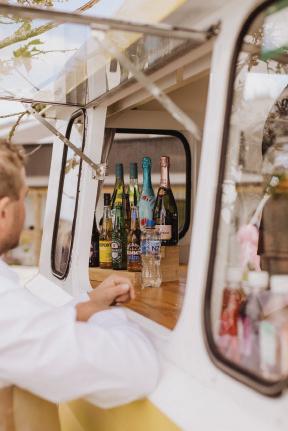
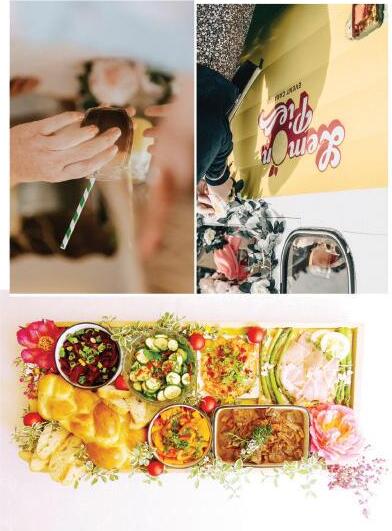
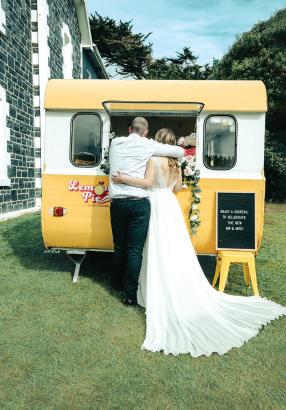
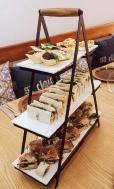

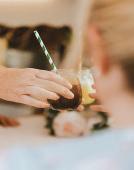




10 WHAT’S ON: Five things to do this winter.
12 BIG ASK: With broadcaster and writer Matt Heath.
14 MUSIC: Taonga pūoro master Al Fraser.
15 SHOPPING: New adventures in HiFi.
16 FASHION: What’s hot this season.
18 FOOT DOWN: Guitar pedal legend Paul Crowther.
22 SHAKER FUN: Tales from the cocktail frontlines.
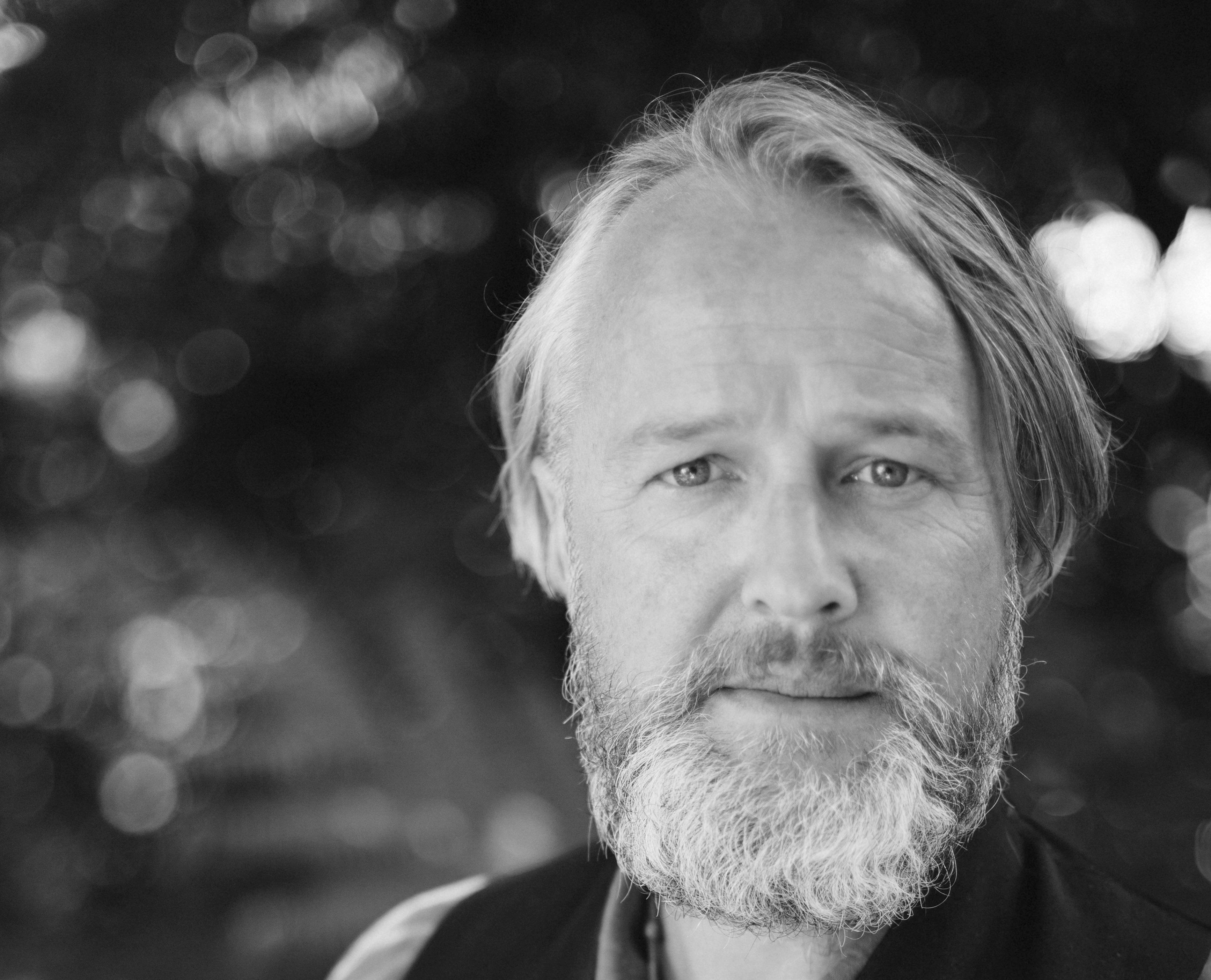

27 ONCE UPON A TIME: Barry Miles was in the Beatles’ inner-circle.
28 HOW YA GOING?
Former Chill Terry Moore writes home from New York.
29 I WAS THERE:
40 years of Pink Frost
30 LOOSE ENDS

If you’ve been charged with a driving offence but need to get back on the road, Mactodd Lawyers can help you with obtaining a Limited Licence.
We understand that everyone’s situation is different and getting back to work is essential:
We can help you with:
• Understanding the charges and their severity
• Applying for a Limited Licence
• Gathering supporting documents
• Explaining restrictions and insurance requirements
• Attending Court hearings

Picture Oamaru born and raised.
while in the secret dark a fresh snow falls filling our tracks with stars.
(Snow, Gillian Clarke. Photo: QueenstownNZ.co.nz)
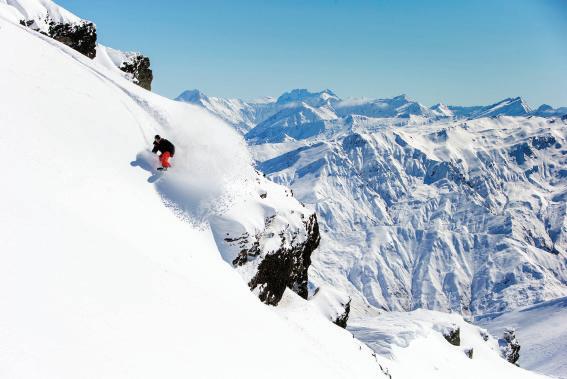
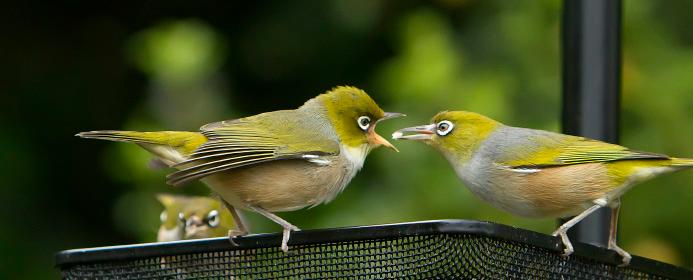
www.topflite.co.nz Feeding New Zealand’s smallest family members since 1974.
What is 2024 going to bring us when it comes to beautiful new design trends?


Keeping up with every interior design trend is impossible but it’s always fun to look at what’s driving new styles and how we might adapt them in different ways to suit our own tastes and homes.
Resene’s expert colour consultants and interior stylists offer their thoughts on what interior design styles they expect to be popular this year.
What’s new in neutrals?
Resene Colour Consultant Amy Watkins: “The warmer palette seems to be what decorators are most drawn to at the moment. Whether it’s the interior or exterior, decorators are happy to go with colours that have some ochre undertones such as Resene Rice Cake, Resene Bianca or Resene Ecru White.”
Resene stylist Moneuan Ryan: “Look for neutrals with warming yellow, orange, red or brown bases, as these bring a generous calm warmth to space. Pair warm neutrals with warm accent colours for the best results. For example, you could try Resene Wafer with Resene Hot Chile, or Resene Malta with Resene Cab Sav Embrace ceilings painted in unexpected hues from subtle but non-white neutrals like Resene Lemon Grass. Where the room allows, neutrals are even being phased out of ceilings in favour of pastels like Resene Inspire or even stronger colours like
Resene Daylight.”
Resene Colour Consultant Madison McLeod:” I’m finding people are much braver with colour and willing to add stronger undertones to their main interior colours. Ivory tones and soft greens are being used more as neutrals as they add warmth into an otherwise cooler room. Colours like Resene Quarter Linen and Resene Half Ecru White seem to be quite common.”
Resene Colour Consultant Meryl Southey: “Warmer neutrals which are comforting, calming and sophisticated will be key for 2024. A great base colour is what people will be wanting; one which combines well with many other trending 2024 hues such as aqua Resene Idyllic, raspberry Resene Very Berry and rich brown Resene Rebel.” What other colours will be popular?
Resene stylist Moneuan Ryan: “Earthinspired palettes will still dominate but will evolve to include nature-inspired oranges like Resene Kombucha, ochretoned mustards like Resene Liquid Gold, caramels like Resene Salted Caramel, deep blushes like Resene Coral Tree, and fruitinfused tones like deep Resene Plum. Brown might be the biggest colour trend. From oak and rich walnut to mahogany, mocha, tan and chocolates through to
softer cocoa or latte shades, even our old favourite friends Resene Tea, Resene Truffle and Resene Fossil get the tick! The other aspect of this, and the popularity of visual textures, is that we will still be wild about wood, with a focus on darker nutty wood stains like Resene Colorwood English Walnut, Resene Colorwood Dark Oak, Resene Colorwood Mahogany and Resene Colorwood Bark.
When it comes to blues and greens, cooler Mediterranean and watery blues like Resene Wedgewood or complex classics are popular choices. Elegant, soft sage greens, minty tones or avocado shades are all trending greens.”
Resene Colour Consultant Madison McLeod: “I think we’ll move away from the greyed-off colours that have been quite popular and move into more vibrant tones, I see blue greens like Resene Sorrento, as well as bright oranges and pinks like Resene Grenadier and Resene Cabaret making more of an appearance.”
Resene Colour Consultant Amy Watkins: “Lots of colour is the key moving into 2024! Decorators are exploring stronger colour tones such as Resene Ayers Rock and Resene Fuel Yellow.”
Resene Colour Consultant Jackie Nicholls: “We will see a continuing trend towards blended and more complex shades, rather
than the clear, simple tones we’ve seen in previous decades.”
What other design trends are on the horizon?
Resene stylist Moneuan Ryan: “Curves continue to be popular but we can also expect angles and straighter lines in the form of herringbone or chevron shapes as well as large-scale painted chequered patterns and diagonal stripes across floors. There’s also an “inside-out” trend where exterior colours mimic the interior palette to create greater connection.
Wallpaper is huge – and everywhere, even extending to wallpapered ceilings. Try mixing and matching Resene wallpaper patterns or experiment with layered patterns and paint colours.
Texture will continue to be popular, allowing for a wide range of raw and rough finishes created with technically creative products like Resene Sandtex Mediterranean effect and Resene FX Paint Effects Medium.”
Resene Colour Consultant Amy Watkins: “For interiors, the trend is for having multiple colours in one room of the home, using geometric shapes to help divide the room into different zones through colour blocking.
For exteriors, the trend is for having

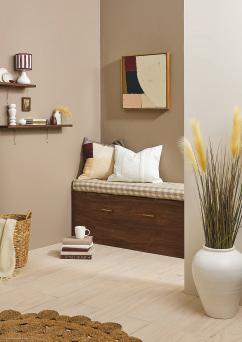
some colour. For example, on the main body of the exterior using soft green Resene Secrets paired with Resene Bianca on the trims or going light with Resene Thorndon Cream and a contrasting windowsill in peachy Resene Dawn Glow.”
Resene Colour Consultant Madison McLeod: “We are seeing a lot of Art Deco styles being brought back into homes. Large-patterned wallpaper, bright pieces of furniture and colour blocking are all on the rise again.”
Resene Colour Consultant Meryl Southey: “Exterior colours will be driven by sustainable and environmentally conscious designs so natural colours and textures will trend. Greens, browns, greys and whites will continue to be popular as they complement architecture and design features such as timber, stone, metal and expanses of glass. Any colours and features which reflect the unique beauty of nature will be popular both inside and out.”
Resene Colour Consultant Jackie Nicholls: “Soft effects such as colour washes will still be very popular adding depth and variation to your finished look. The colours of these are evolving from natural, stony colours to dusty pinks like Resene Valentine, faded terracotta like Resene Summer Rose and red wine shades like Resene Pandemonium. These colours are relaxing to live with and timeless but still have a good dose of colour in them.”
Top tip: You can develop your colour expertise with Resene Colour Class. Whether you've run out
of ideas, or want to improve your understanding of colour, the free videos cover topics such as how to use a colour wheel, finding your colour personality and creating a concept board. Find out more at www.resene.com/colourclass
What will influence design trends in 2024?
Resene stylist Moneuan Ryan: “A focus on sustainable and regenerative practices strongly influences trends, so we’ll continue to see repairing and re-using items as a popular choice.
Ensuring our homes offer protection from the elements will see a continuation of technical innovation with a focus on eco-choice products that withstand increasingly harsh environmental factors.”
Resene Colour Consultant Meryl Southey: “The focus will be on consistency, balance and wellness and making houses an uplifting place to unwind, recharge and entertain.”
Resene Colour Consultant Madison McLeod: “With people travelling overseas again, we can expect a lot of international trends to appear here. Seeing how other countries and cultures use colours to tell a story inspires travellers to do the same at home.”
TOP TIP: Resene Colour Experts at your local Resene ColorShop can help you adapt your favourite trends and colours to suit you and your home. Book a free virtual or instore colour consultation, www.resene.com/colourconsult or a paid home visit (selected areas).
1. Earthy tones and textures are evolving to include more colourful shades like the sunriseinspired walls of this sitting area painted in Resene Manhattan. The skirting is painted in Resene Dawn Glow, with floor finished in Resene Colorwood Breathe Easy. Bench and vase in Resene Ghost, small box in Resene Rice Cake, planter in Resene Dawn Glow and box in Resene Sazerac with coaster in Resene Manhattan. DIY artwork in Resene Ghost, Resene Rice Cake, Resene Dawn Glow, Resene Sazerac and Resene Manhattan. Chair from Danske Møbler. (Project by Moneuan Ryan, image by Bryce Carleton)
2. Deeper azure ocean blues paired with caramel and darker timber tones, lend a beachy-theme palette a warmer autumnal feel. These walls are painted in Resene Undercurrent with skirting in Resene Tarawera. The floor is finished in Resene Colorwood Breathe Easy. On the sideboard the vase is Resene Half Sandcastle, bird in Resene Pirate Gold and bookend in Resene Blumine. The book on the floor is painted in Resene Calypso with small pot in Resene Juniper. Mat from nestdirect.com, chair from Danske Møbler, cabinet from Mocka. (Project by Moneuan Ryan, image by Bryce Carleton)
3. Visual textures and patterns will continue to be popular in 2024, like this freehand painted wall design in Resene Creme De La Creme, Resene Parchment, Resene Rocky Point and Resene Rice Cake. The floor is finished in Resene Colorwood Breathe Easy. The headboard and shelf are Resene Hindsight with side table and lightshade in Resene Rocky Point and bench seat in Resene Rice Cake. Duvet cover from the Resene Living Collection from Briscoes, throw, blue sheets and pillowcases from Freedom. (Project by Annick Rennell, image by Bryce Carleton)
4. Warmth is the key word for neutrals in 2024, with layers of deeper shades and the revival of all things brown. The back and left wall are painted in Resene Jetsam Brown with front right wall in Resene Sandspit Brown. The shelves and bench seat are stained in Resene Colorwood Bark with floor stained in Resene Colorwood Breathe Easy. Side table, candle holder and bud vase in Resene Albescent White, large vase in Resene Warmed Brown, lamp base in Resene Scoria and books on floor in Resene Jetsam Brown, Resene Albescent White and Resene Warmed Brown. Cushions and throw from Baya, art from A+C Homestore. (Project by Melle van Sambeek, image by Bryce Carleton)

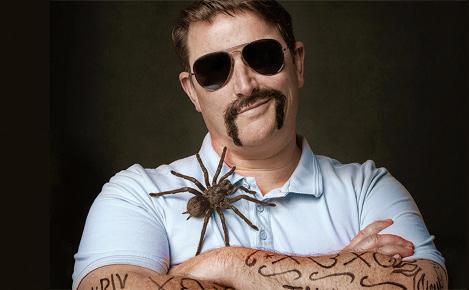
Ed Byrne
Queenstown Memorial Centre, Queenstown 8pm, Thursday August 1
“Tragedy plus time” was supposedly Mark Twain’s definition of comedy, and fittingly that’s now the title of Ed Byrne’s latest show. He received multiple five-star reviews at last year’s Edinburgh Fringe, including ‘Best Reviewed Stand-up Show’ from the British Comedy Guide.
Heath Franklin’s Chopper
Civic Theatre, Invercargill
7pm, Sunday June 9
Book now and join Chopper for your best night out in yonks. It’s been three years since Heath Franklin was here, and now he’s not, ahem, wasting any time. In his Chopper guise, the 7 Days panelist offers “a top hour of uproariously entertaining comedy”... and some coarse language.
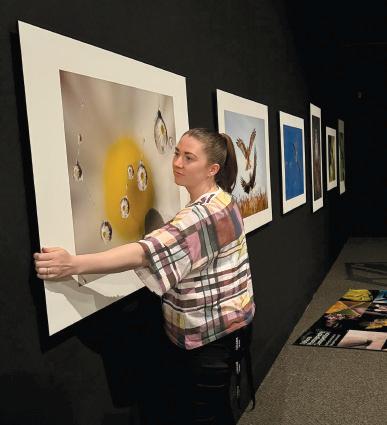
Tūhura Otago Museum, Dunedin
Ongoing
It’s the 25th anniversary of the Tūhura Photography Competition, with every overall winner from that period included in the 25 Years Captured exhibition. With entries for this year’s competition having closed in late May, those winners will be added to the display from July 6.
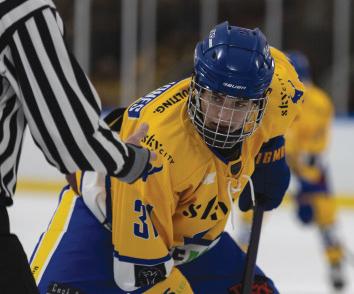
Skycity Stampede vs Auckland Mako
Queenstown Ice Arena, Queenstown


7pm Friday June 7, and 6.30pm Saturday June 8
Queenstown’s NZ Ice Hockey League champions take on development team the Auckland Mako in two games over the weekend. Later in June the Skycity Stampede will host the Botany Swarm, who they vanquished in last year’s final.
Tenors - The Best of Pink Floyd
St Paul’s Cathedral, Dunedin
June 13-15
The Rock Tenors return to present a unique concert experience celebrating the very best of Pink Floyd. At Dunedin’s beautiful St Paul’s Cathedral they’ll perform some of the band’s greatest hits, including Money, Wish You Were Here, and Another Brick in the Wall.

Raised in Dunedin, Matt Heath has forged a unique kind of media career. It has included the anarchic Back of the Y Masterpiece Television, the tongue-incheek band Deja Voodoo, the Matt and Jerry Show on Radio Hauraki, and the Alternative Commentary Collective. After a decade of writing weekly columns for the NZ Herald, he has penned A Life Less Punishing: 13 Ways to Love the Life You’ve Got.
What inspires you?
My kids inspire me to get out of bed every morning at 4.30am to go to work and provide for them. They also inspire me with all the interesting media and ideas they bring home on a daily basis.
And what annoys you?
I have a chapter in my book about annoyance and how I have learnt to deal with it. Many things used to annoy me. Parents on sports sidelines yelling terrible advice at kids, people overfilling rubbish bins when I know that they won’t get picked up like that, Keira Knightly. But I have recently decided not to be annoyed by anything. I didn’t know until a few years back I can just say to myself, ‘Matt, you don’t need to let this become a thing’, and then it doesn’t become a thing. It’s a surprisingly simple and effective solution to annoyance.
Can you recommend a book, a film, and a song?
I recommend my book A life Less Punishing (I am on the promo trail after all), and also all of Charles Dickens. I have been listening to his work in audiobook form. The books are so long I don’t have to make a decision about what to listen to at the gym for months at a time. Currently listening to Nicholas Nickleby/Bleak House. It’s great. As for movies, you can never watch The Shawshank Redemption or Top Gun Maverick too many times. The song that
I love the most right now is I Don’t Want To Talk About It (One Night Only) by Rod Stewart. It’s a live version - watch it on YouTube. He gets Amy Belle, a Scottish singer, up on stage and her vocals will break your heart.
What’s the most important thing that you’ve learnt?
To appreciate finitude. If you keep in mind that everything you do, you will one day do for the last time, you will appreciate life more. Your job, a drink with a friend, driving your car, talking to your children, walking. It’s easy to sleepwalk through life not really appreciating what you have. But if you remind yourself often that nothing lasts forever, then everything around you and everyone in front of you becomes significant.
Who do you admire?
Like so many others these days, I am a huge fan of Marcus Aurelius. I read a passage from Meditations every day. He had the power of life and death over everyone in the Roman Empire. Yet when things went wrong, instead of throwing people to the lions, he chose to transform his frustrations into acceptance, his anger into understanding, and his challenges into opportunities. Very awesome person. No one else in his position has been strong enough to behave so well.
To advertise in the next South Magazine contact Nic Dahl on 0275 548-512 E: nic.dahl@alliedpress.co.nz
What do you love about where you live?
I live in Morningside, Auckland. There are so many great bars and restaurants within walking distance, I have Eden Park at the end of the road and beautiful Maungawhai in the distance to the east. It’s an extremely vibrant area.
What do you most enjoy doing?
I enjoy talking on the radio and on my podcasts every morning. I feel very lucky to have a job where I get to yabber to great mates about the events of the day. Very lucky to have an audience who enjoys that too.
When (other than now) was the best time of your life?
I look back fondly to when my two boys were little toddlers. Most of our friends had children around the same age and we often had all the kids running around at BBQs, under our legs in our backyards. I know it was a full-on time back then, and we never got a second to rest. But now looking back, I remember it like photographs of fun family times.
What are you looking forward to?
The Olympics in July. 16 awesome days every four years. I love becoming an expert again on sports I haven’t thought about since the last one. The Men’s Rowing 8 winning gold in Tokyo was sensational. What a well planned race.
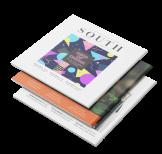
I love following the Kiwi heroes that spring up.
I think everybody should… at least once in their life.
Give blood. It’s the least we can do really. For the longest time I had a fear of needles. So giving blood was tough for me. Now I just face my fears by zoning in and watching the blood leave me. When I do that it’s very easy. If you’re healthy, giving blood is a great thing to do for your fellow New Zealanders.
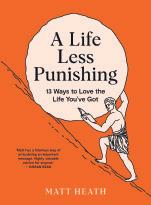
• A Life Less Punishing: 13 Ways to Love the Life You’ve Got by Matt Heath is published by Allen and Unwin NZ.


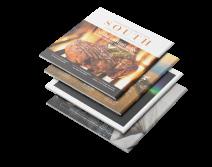
Alistair Fraser returns to Ōtepoti to play taonga pūoro for Michael Norris’s Rerenga at the Dunedin Symphony Orchestra’s Journeys.
By Gavin Bertram
Alistair Fraser certainly keeps himself busy with a wide range of musical projects.
The taonga pūoro specialist has recently performed at different events with fellow southern son Rikki Gooch Pirihi in Wellington, where they both reside.
He’s also been rehearsing to record with a taonga pūoro orchestra, and preparing for upcoming workshops on making the traditional Māori instruments.
Further on the horizon is a visit to his hometown to perform at the DSO’s Journeys concert on July 6.
There he’ll be playing with Michael Norris, playing taonga pūoro for the composer’s Rerenga
First performed by the NZSO in 2019, the piece brings together the sound worlds of Māori and Captain Cook, seeking to “fuse and meld them to the point where it is no longer clear which is which”.
“Michael is there as well, he’s part of the performance, though you don’t see him on stage,” Fraser says. “He’s bringing in my sound, and it goes through his audio processing techniques on his laptop. That gets fed into the PA, and the orchestra is mimicking those electronic treatments as well as my taonga pūoro.”
As well as Rerenga, the DSO will perform music from Mozart, Mahler, and Sibelius, with principal guest conductor James Judd. Fraser has been involved in music in various forms since he was a child in Dunedin. While it was initially forced upon him through school choirs and musicals, he later became interested in playing drums.
In his teens he moved onto guitar, and performed with his school band at the Smokefree Rockquest. That led on to studying jazz guitar at Victoria University of Wellington. In his final year there, he was introduced to
(Photo: Ebony Lamb)
taonga pūoro when a friend gave Fraser a Kōauau - a small flute.
Soon after he saw the late taonga pūoro expert Matua Richard Nunns perform.
“I was like, there’s a lot more than a Kōauau going on here, so that was that,” Fraser relates. “Matua Richard was in Wellington a lot, so I’d hassle him and ask him questions.”
He also approached the late Hirini Melbourne about how to make the Pūtātara, a traditional conch trumpet.
Besides talking with those committed to keeping taonga pūoro alive, Fraser’s research included attending workshops, studying the instruments at Te Papa, and examining books at the library.
Through that work, and more formal study since, he learnt how to construct the range of taonga pūoro that is used in his practice.
Performance wasn’t Fraser’s initial focus but he was soon drawn into that, and finds plenty of opportunities to play to a variety of audiences.
Spanning the classical and contemporary worlds, he’s able to find some commonality between the diverse musical realms that he’s involved in.
Fraser reflects that it’s all ultimately just sound, with hopefully an element of human expression.
“Some worlds of music think they’re better than others, and I find that ridiculous because it is all sound,” he says. “I’ve heard utter genius come out of people making something up on the spot, and I’ve heard people who compose and it leaves me cold. So maybe that’s the magic - that it’s created in the moment.”
• Journeys - Dunedin Symphony Orchestra: 7.30pm, Saturday July 6, Dunedin Town Hall.



Wiim have sprung from nowhere in the last few years, capturing a strand of the audiophile market with streaming devices that offer superb value for money. Available at Relics HiFi are the Wiim Pro streamer, and the identical looking but better specced Wiim Pro Plus.
It’s a great time to be an audio enthusiast, with the regular release of amazing quality gear at impressive prices. 75 Fox Street Invercargill 03 218 9021 or 0800 033 925
You’ll certainly be impressed by Revival Audio’s Atalante 3 speakers, available from Relics HiFi in Dunedin. These two-way bookshelf speakers, with optional stands, may be compact but offer an exceptionally big sound.

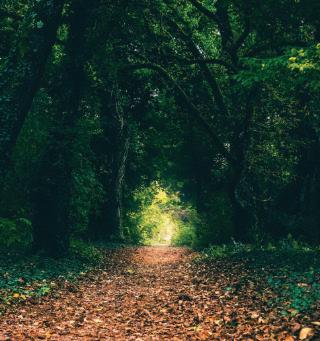

Email: office@avenalpark.co.nz | Website: avenalpark.co.nz
Honouring life and celebrating memories


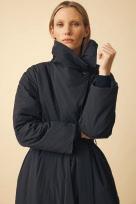
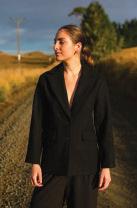







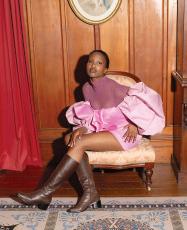
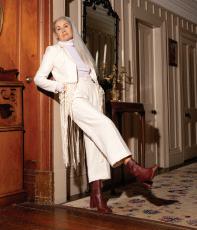



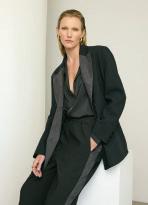
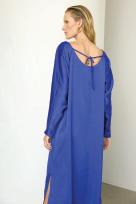
1. Abagail sneaker in white/ oxblood leather, available from Merchant 1948 in the Meridian Mall, Dunedin.
2. Avery sneaker in white leather, available from Merchant 1948 in the Meridian Mall, Dunedin.
3. Clapham boot in dark brown leather, available from Merchant 1948 in the Meridian Mall, Dunedin.
4. Bardot knee high boot in dark brown leather, available from Merchant 1948 in the Meridian Mall, Dunedin.
5. Amanda ankle boot in oxblood leather, available from Merchant 1948 in the Meridian Mall, Dunedin.
6. Hana ankle boot in vintage cream leather, available from Merchant 1948 in the Meridian Mall, Dunedin.
7. Attune midi dress in black, available from Moochi in the Meridian Mall, Dunedin.
8. Enact coat in black, available from Moochi in the Meridian Mall, Dunedin.
9. Polo cape in charcoal marle, available from Moochi in the Meridian Mall, Dunedin.
10. Server sweater in beige neutral, available from Moochi in the Meridian Mall, Dunedin.
11. Total vest in dark navy, available from Moochi in the Meridian Mall, Dunedin.
12. Tune dress in deep green, available from Moochi in the Meridian Mall, Dunedin.
13. Tux blazer in black, available from Moochi in the Meridian Mall, Dunedin.
14. Versed dress in electric blue, available from Moochi in the Meridian Mall, Dunedin.
15. Atér Holland wool blazer in Black, available from Hype in Dunedin.
16. Et Alia Preston pant in black, available from Hype in Dunedin.
17. NYNE Quinn jumper in black, available from Hype in Dunedin.
18. Tuesday Sporty sweatshirt in olive/applique, available from Hype in Dunedin.
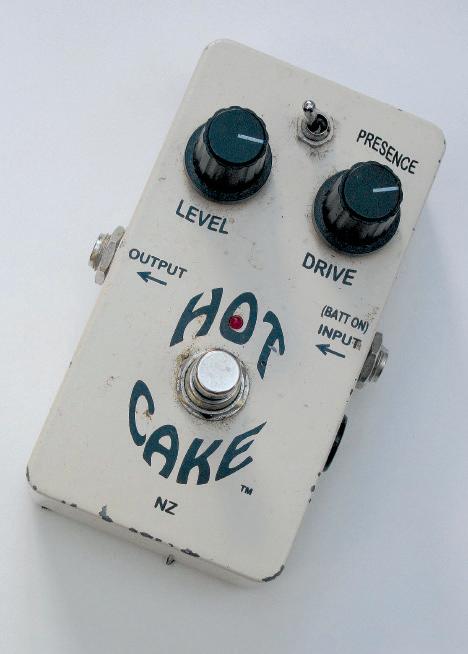
After growing up in Dunedin, electronics whiz Paul Crowther joined Split Enz - and then developed an internationally renowned guitar pedal.
By Gavin BertramPAUL Crowther is busy assembling Hotcake pedals as he talks on speakerphone from a villa in suburban Auckland.
It’s from their home in Mt Eden that he and wife Jo run Crowther Audio, manufacturers of an overdrive pedal used by some of the world’s most prominent guitarists. They include Mark Knopfler (Dire Straits), Noel Gallagher (Oasis), Jack White (White Stripes), Thom Yorke (Radiohead), Peter Frampton, and Neil Finn.
Perhaps it’s because the Hotcake is so popular that Crowther must crack on while we talk. Or maybe it’s because Jo, who does the circuit board assembly, is typically 100 units ahead, before he does the final assembly and testing.
“It’s very much a cottage industry as far as that goes,” Crowther says. “It’s just the two of us doing it, all the main work.”
Growing up in Roslyn during the 1950s and 60s, Crowther was interested in both music and electronics from a young age.
As well as being a soprano in the St Paul’s Cathedral Choir, he’d collect old radios and electronics from the North East Valley Tip. That developed into building crystal radio sets, and joining the Dunedin Radio Club. Then came the Air Training Corps, which Crowther was able to join a year early at 13 by becoming a sidedrummer in the band.

“I got really interested in drumming, and of course the Beatles were around with Ringo Starr,” he says. “And my electronic interest really moved to electronics as applied to music. I became very interested in electronic organs, and I’d get technical manuals from the library and read them. Then I started making gadgets, like fuzz boxes for guitarists.”
Leaving school at 15, Crowther applied for a job as an apprentice electrician with New Zealand Railways. But because of his interest in electronics he was offered a job in the communications department, which meant becoming a telephone ‘mechanician’. There he learnt more about electronics and began repairing musical equipment for friends.
In Dunedin the teenage Crowther drummed with a band called The Gentlemen, and he continued playing with Roger Skinner and the Motivation after a 1969 move to Auckland.
An important connection was made when that band, who performed most weekends in Auckland, auditioned keyboard player Tony (later Eddie) Rayner. Before long Crowther, Rayner, and Alastair Riddell formed another band called Orb, playing songs by the likes of David Bowie and Yes.
Rayner and Riddell soon found success with the charttopping Space Waltz. But during the Orb period of 1972 and 1973 Crowther built what was quite likely New Zealand’s first keyboard synthesizer, having been
inspired by English prog rock act Emerson, Lake, and Palmer. Particularly Keith Emerson’s Moog solo on the song Lucky Man.
“I thought ‘I’ve got to try and make one of those’,” he remembers. “You didn’t think so much about buying things like that; if you wanted something you made it.”
Crowther’s pre-existing electronics knowledge offered a foundation, and the 1968 album The New Nonesuch Guide to Electronic Music offered further insight into synthesizer technology. But the project still required a lot of research and development, including creating his own circuits.
The instrument was used live by New Zealand music icons Split Enz, and on their 1975 debut album Mental Notes. Also featuring on that record would be Crowther and Rayner.
Led by Tim Finn and Phil Judd and initially named Split Ends, they emerged from Auckland in 1972, making an impact with their theatricality.
“When I first saw them I thought, ‘well, Tony’s going to be in his band’,” Crowther says. “And he rang me up and said, ‘I’ve been asked to join Split Ends’. Then sometime later he called me and said ‘we’re looking for a drummer… would you like to come and audition?’”
And so, 50 years ago this winter, he had just two weeks to learn all the material that would eventually be recorded for Mental Notes before performing live.
Then Governor General Patsy Reddy with Paul Crowther MNZM, in April 2021. (Photo: Office of the Governor General)

Crowther recalls the buzz around Split Ends in Auckland at that time, saying that it was amazing to be involved in something that everyone in the band threw themselves into.
In early 1975 their manager Barry Coburn arranged an Australian tour that led to some crucial opportunities.
Although the early part of the tour saw them illpaired with other bands, Split Enz later made a TV appearance on a prominent music programme on ABC. They also supported Roxy Music in Sydney, and did a deal with Mushroom Records that led to Mental Notes being recorded in May.
The album reached number seven in the New Zealand charts. But when Split Enz relocated to England in 1976 it was decided to essentially re-record it with Roxy Music’s Phil Manzanera producing.
“We thought we could do it better,” Crowther recalls. “But we were probably a little bit wrong about that. You could argue that the production might have been slightly better, but I think the general vibe was better on the original.”
Following Second Thoughts, Split Enz took a change in direction, with Tim Finn’s vision for it seeing Phil Judd leave.
Crowther was another casualty of this period, with the decision being made for him. He still doesn’t know
what the reason was, but it was very disappointing.
“I’m not sure why,” he says. “I think maybe there was a feeling they wanted the music to be more commercial, which was the last thing I was thinking about when I went to England. That was pretty annoying at the time, and you start wondering ‘what’s wrong with my playing?’”
It was while he was still in Split Enz in London that Crowther first worked on his idea for the Hotcake pedal. He says he was so used to working a nine-to-five job that he’d still get up each day and work on various projects.
Fascinated with distortion, he’d had an idea for a pedal that wouldn’t alter the fundamental characteristics of the guitar sound being fed through it. An early prototype of the circuit was built into the guitar of Split Enz member Noel Crombie.
“But he came back and said, ‘maybe I need something more fuzzy… it sounds a wee bit too professional’,” Crowther says. “After I was out of the band I made up a couple of these pedals, going to the local electronic shop and getting the bits.”
At the end of 1976, Crowther and wife Jo decided to move back to New Zealand. He returned to music company Jansen where he’d worked in the early 1970s, while also later developing the Live Sound production company.
But the Hotcake was also bubbling away in the background. The pedal was used by a lot of New Zealand musicians, with Neil Finn and Dave Dobbyn being advocates of its unique sound.
It was also a weapon of choice for many acts on the Flying Nun label, including Dunedin’s 3Ds, and Shayne Carter.
During the 1990s Crowther had several breaks that introduced the Hotcake to a wider audience internationally. The first was a call from an American woman visiting Auckland, whose son had asked her to find the pedal for him.
Ken Fisher later mentioned the Hotcake in his column in Vintage Guitar magazine, which led to international orders.
Another inquiry from Hiroshi Yagi in Japan saw Hotcake production being upscaled to meet demand in that market.
But instead of having the pedals manufactured elsewhere, it’s all been kept in house.
“We still make the Hotcakes ourselves,” Crowther says. “I sell them pretty much directly to the retail shops around New Zealand, and only a handful in America. That’s about all I can cope with really. I have a distributor in England, some go to Europe, and still a few to Japan.”
While there are clones of the Hotcake available on the internet, he’s chosen to view that as free advertising rather than plagiarism.
Ultimately, Crowther is just happy if someone is enjoying using the pedal he first developed almost half a century ago. And there is a long list of well known guitarists around the world doing just that.
For his multiple services to music, Crowther was honoured with an MNZM at the 2020 New Year Honours.
“It was a bit embarrassing,” he says. “For my money the people who are the most deserving help other people day-to-day. But it was nice to receive it, and I suppose it was a little bit deserved.”
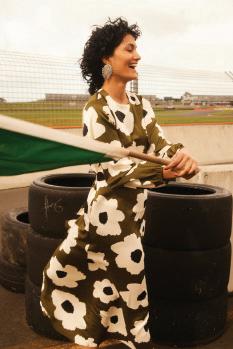
anne mardell antler ater blacklist bored george cartel & willow coop cooper curate maxed mimoso mink pink neris nes non nyne nineteen 46 naturals ricochet recreate staple the label silk & steel storm tuesday two by two



Gin in June, you say? Well, the team at Meenans Liquorland says why the heck not!
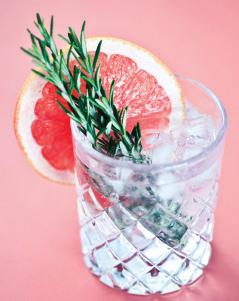
With over 100 International gins, 70+ New Zealand gins (including from the lower South Island), and the increasing popularity of mid strength and 0% alcohol gins now available at Meenans Liquorland, you would be silly not to venture in for a look.
There is a vicious rumour floating around that the gin category is in decline. But all we know here at Meenans Liquorland is that our customers are still looking for the latest and greatest from their gin purchases.
The sheer amount of customers looking for new releases tells us the distillers are still hard at it. Gin is one of those rare olfactory delights that offers an abundance of flavours out of anything and everything you choose to distill.
Gin will always evolve and be a favourite with bartenders and at home cocktail enthusiasts, due to its sheer versatility and mixibility. Our customers are choosing to use gin more regularly at home in good old fashioned cocktail classics like the G&T.
Try using any one of the vast number of tonics available on the market that offer a weird or wonderful flavour profile.
If you are choosing to use a garnish in your gin cocktail, here are a few tips to get it bang-on…
Use woody herbs for bright, citrus-driven
gins (rosemary, sage, or thyme sprigs always compliment).
Classic dry gins with abundant juniper notes are best garnished with citrus classics such as lemon, lime, or grapefruit (don’t be afraid to give the peel a bit of a pinch to release those lovely oils).
When It comes to soft, delicate, and floral gins, garnish with soft flavours like raspberry or cucumber.
Like all liquor, gin is returning to its old roots as far as classic gin cocktails are concerned.
Our customers are increasingly curious about the ingredients needed to build the classics that emerged in the early 20th century, such as a classic Martini. A tip for serving a quality Martini is to chill your spirits and glass in a freezer to prevent dilution.
The Gin Fizz is a great cocktail that is universally loved, with the combination of citrus and egg whites creating a great texture for the drink, and the gin offering lovely floral notes and spice.
Another classic to have a go at, given the zingy wild berry hit, is the Clover Club. A sweet cocktail relies on quality grenadine (give the Bardinet Grenadine imported by Meenans Liquorland a whirl), and make your own Clover Club with fresh raspberries and pomegranate.



The best cocktails are an inspired synthesis of complex flavours. Some of the most creative bartenders in the south talk about art in a glass.By Gavin Bertram
ATALENTED cocktail specialist is the conductor of the symphony orchestra, or the executive chef in a bar setting.
That’s the opinion of Jeremy Samuels, the general manager of Sofitel Queenstown. In autumn last year the hotel launched its refurbished bar Le Salon Rouge, with a prohibition era speakeasy theme.
Cocktails are the centrepiece of the story. Initially designed by mixologist Mitch Corbett, the eight signature drinks are strongly linked to the Queenstown area.
“Our cocktails all tell stories based on legends and fables of the local area,” Samuels relates. “The signature cocktails are quite immersive. It’s quite sensory - there are smells, there are sounds, there’s that emotive storytelling component.”
This is the vanguard of mixology, where art and science collide. Since the pandemic, high-end cocktails made with quality ingredients have become increasingly popular.
ON A COLD, grey afternoon, the eclectic surrounds of Woof! bar in central Dunedin offers a warm refuge.
It’s here, with a colourful formation of bottles lining the shelves, that director Josh Thomas and head bartender Violet McGlynn-Cole work at the cocktail frontlines.
They serve hundreds of cocktails each week, and conjure up a new, themed cocktail for each month. Although cocktails are still inaccessible for some punters, they have become the top seller at Woof! over its first four years in business.
“They play a bigger role than I initially thought they would,” Thomas says. “They have become the dominant force here, followed fairly closely by beer. Cocktails can feel like another world, but
once you’ve ordered one or two you’re on a roll.”
McGlynn-Cole has been at Woof! for three years, working her way up to head bartender. The creative aspect of cocktails is something that she particularly enjoys about the job.
With a universe of ingredients available, and inspiration on offer from the many cocktail books and the online Difford’s Guide, there are few limitations.
Along with devising a new, unique drink for each month, the main cocktail list at Woof! is changed monthly.
As well as leaning on the vast range of spirits on offer, using seasonally available ingredients is important.
“There are certain flavours that you go for in different seasons,” McGlynn-Cole says. “At this time of year it’s like spiced, richer flavours, and darker spirits sometimes. Balancing the menu is important, so you want a few of each kind of base spirit, and then different flavours.”
At the extreme end mixology embraces science to achieve often spectacular and unusual results. But not all cocktail bars are interested in that sphere.
For higher volume establishments such as Woof!, achieving a consistent level of quality is of more importance.
“We’re not driven so much by those - in the nicest possible way - gimmicks,” Thomas observes.
“Because we straddle being a pub and a cocktail lounge, we crank out literally hundreds of cocktails a week. To keep the quality really consistent, good, simple recipes done well work for us.”
A current favourite at the bar is the Bangkok Margarita, a Southeast Asian twist on the classic that features coriander, lime, mezcal, and Fire Dash chilli bitters. And coming up for Matariki is the Aurora, featuring kawakawa and visually
themed around the Southern Lights.
COMING back to New Zealand after working in hospitality overseas, Jaz Stoddart and husband Alex saw a gap.
At the bars they worked at in the UK and Greece they’d learnt a lot about cocktails, and the direction the drinks market was heading. Back home, it was obvious that New Zealand had some catching up to do.
“If you went to a festival here there’d only be beer, wine, and cider,” Stoddart says. “So we started Alchemist Mixology in 2019, and we do beer, wine, and food festivals all over the countryprobably over 100 a year.”
As well as serving at various events and running cocktail classes, they also took over Dunedin’s intimate Pequeño Lounge a year ago.
The bar is a different beast from the high volume drinks turnover at festivals. With an emphasis on quality, it’s all about providing an experience for their diverse clientele.
“You want people to come in and be greeted, because it’s not just coming in and getting a drink,” Stoddart considers. “It’s sitting down with your friends, having a nice enjoyable time.”
Elevating the customer experience at Pequeño was the main priority, and a large part of that is the cocktail offering.
With specialist mixologists behind the bar, there’s an emphasis on creativity. The drama involved in creating the drink is important, including the techniques and tools used.
The Flavour Blaster gun, for example, can inject a bubble of flavoured vapour into a cocktail that can subsequently be burst when it’s served. Or there’s the fat-washing method that originated in haute cuisine. Applied to cocktails, spirits can
over time be infused with the flavour of any number of fatty products, adding both flavour and mouth feel.
An example at Pequeño was a Peanut butter and Jelly cocktail, where vodka was fat-washed with peanut butter before being mixed with a raspberry jam syrup.
“They are time-consuming,” Stoddart says. “But when you’re paying $20 for a drink you want it to be something a bit different. There is definitely a lot of trial and error that happens behind the bar.”
Using quality ingredients is paramount, with many locally made spirits being implemented.
That will be a particular focus at Alchemist’s Spirit of Mixology Cocktail Festival at Errick’s in Dunedin on Saturday, June 8.
At the two sessions from 12 noon to 4.30pm and 5.30pm to 10pm, there’ll be music and food trucks to complement the cocktails.
Besides Alchemist Mixology, the other vendors are Cardrona Distillery, No.8 Distillery, Quick Brown Fox, and Emerson’s doing beer cocktails.
“It’s a pretty similar idea to a beer festival,” Stoddart says. “You get a festival cup and go around trying lots of different quirky cocktails from all the vendors.”
HAVING worked with many over his years in hospitality, Sofitel’s Jeremy Samuels believes mixologists share common traits.
“They think differently, they challenge convention,” he says. “I don’t want to use the word bohemian, but that’s kind of what they are. They’re very unique personalities, and they’re a lot of fun to work with.”
Samuels has found that they don’t respond well to rules and boundaries. He’s also learnt to be honest when an idea isn’t going to fly, and to congratulate when it will.
In the refined, loungey atmosphere of Le Salon Rouge, they believe in putting on a bit of a show with the signature cocktails. The high-end touch provides a real point of difference for the uncrowded, intimate bar.
“It provides a conversation piece,” Samuels says. “It’s about a five minute experience, because we finish the cocktail at the table. So it’s Instagrammable, it’s conversational, and it’s emotive as well. All that stuff’s obviously very important.”
At heart, Le Salon Rouge is focused on gin, and particularly those distilled in the Central Otago area.
And so it is no surprise that Samuels’ drink of choice is perhaps the most classic cocktail of them all - the elusively simple Martini.
“Twists on the Martini are always an interesting exploration of what a mixologist can do,” he considers. “But they will very rarely play with a Martini recipe because it’s almost sacred.”
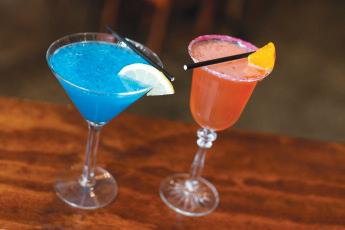


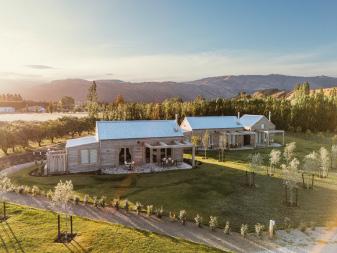
Be our guest & discover Monte Christo Winery in Clyde
Nestled just steps away from our historic cellar door, underground cellar and food trailer, our three guest cottages offer a sanctuary of luxury and comfort.
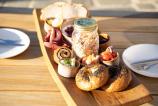
Relax with a glass of wine beside the crackling wood fire, or venture out to discover the beauty of the region along the Rail Trail, a mere 400 metres from your doorstep.
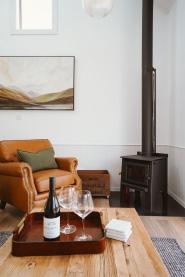






Here, There, and Everywhere: It was 60 years ago this month that the Beatles visited Dunedin. Barry Miles was in close orbit of the group during the latter part of their existence.
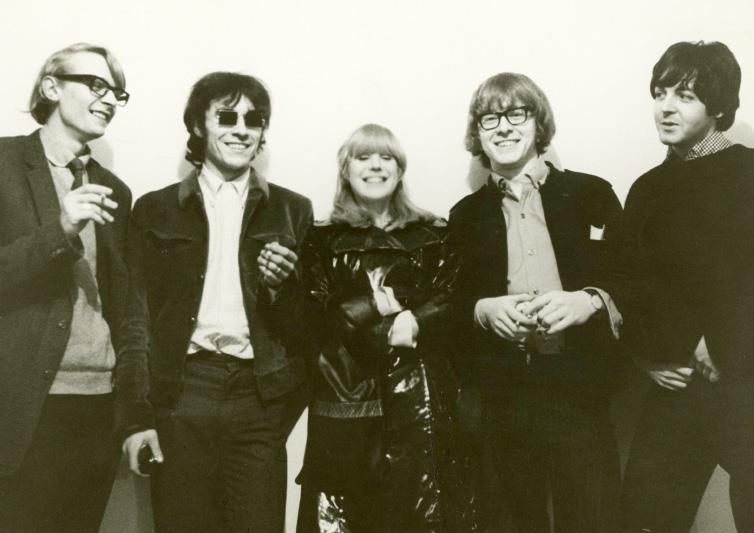
BEATLEMANIA was reaching a shrill crescendo when the Fab Four visited Dunedin on June 26, 1964.
With the hysteria building towards an unsustainable peak, it marked the beginning of the end of the Beatles as a live concern.
But while they stopped touring in 1966, the group really cemented their legacy by embracing the recording studio - and the counterculture.
It was during this period that Barry Miles came to know the Beatles. He maintained a close association, subsequently writing books about them including the authorised biography of Paul McCartney. Miles, as he was universally known, was helping to run the Indica bookshop and gallery in London when he first entered McCartney’s orbit.
“It was a small scene, so one felt very privileged and elite to be in it,” Miles told me. “I’m the same age, had the same upbringing, and was taught the same things as the Beatles, and if you see someone a lot you become friends. But each member had his own entourage, and it was not really done to move between them.”
Born in 1943, and a product of England’s influential art schools, he had been



involved in the nascent counterculture since the beginning of the 1960s.
As well as attending the huge anti-nuclear CND protests, Miles had nurtured literary connections with beat poets including Allen Ginsberg, Lawrence Ferlinghetti, and Gregory Corso.
The ‘Wholly Communion’ reading from those three to 7000 people at the Albert Hall in June 1965 was a critical juncture for the subculture.
“That was the beginning of the underground scene in London,” Miles recalled. “The whole thing was just this incredible party, and everyone who was there was looking around and realising how amazing it was. This was the first time that young people realised that there was a different sort of spirit in their generation.”
A few months after that event, Miles and friends John Dunbar and Peter Asher opened Indica, which became an important facet of Swinging London. McCartney helped build shelves and paint the walls, while John Lennon would later be introduced to Yoko Ono there.
Due to their friendship Miles accompanied McCartney to clubs and shows, and also attended many Beatles’ recording sessions at Abbey Road. His diaries and subsequent documenting
of his memories enabled him to later pen authoritative volumes including The Beatles: A Diary, and McCartney’s 1997 biography Many Years From Now.
And through his brief time as its manager in 1969, he wrote The Zapple Diaries about the ill-fated offshoot of the Beatles Apple Records label.
“We started the Zapple label, which was the spoken word and experimental end of Apple,” Miles related. “It was basically Paul and John who asked me to start the series in the typical Beatles way; they just said make a list and go and do it, and they had the financial power to say such things.”
But after he’d recorded the likes of Ferlinghetti, Ginsberg and Charles Bukowski, the enterprise was unceremoniously terminated by the Beatles’ notorious second manager Allen Klein. Only two Zapple releases were made - avant garde albums by George Harrison, and Lennon and Ono.
Following that endeavor, Miles’ energies were directed towards writing about the many aspects of the counterculture that he’d been in contact with.
As well as biographies of Ginsberg, Bukowski, Jack Kerouac, William Burroughs, and Frank Zappa, he’s been prolific in documenting his epoch. Those volumes have included In the Sixties, In the Seventies, Hippie, London Calling, and

The British Invasion.
While he was at the cultural epicentre of the 1960s era and survived to tell the tale, Miles says it was tiring.
“All of that was very exciting, and very exhausting actually,” he mused. “By the end of the decade I think all of us were completely worn out. But during the height of it, it was incredibly exhilarating. Everything seemed possible at that point.”




As a bassist, Terry Moore was a member of Kaikorai Valley High School punk band Bored Games in the early1980s. Later he was in The Chills over several phases, including on the Pink Frost single, and worked as a recording engineer. Since the early 1990s Moore has been a resident of New York City.
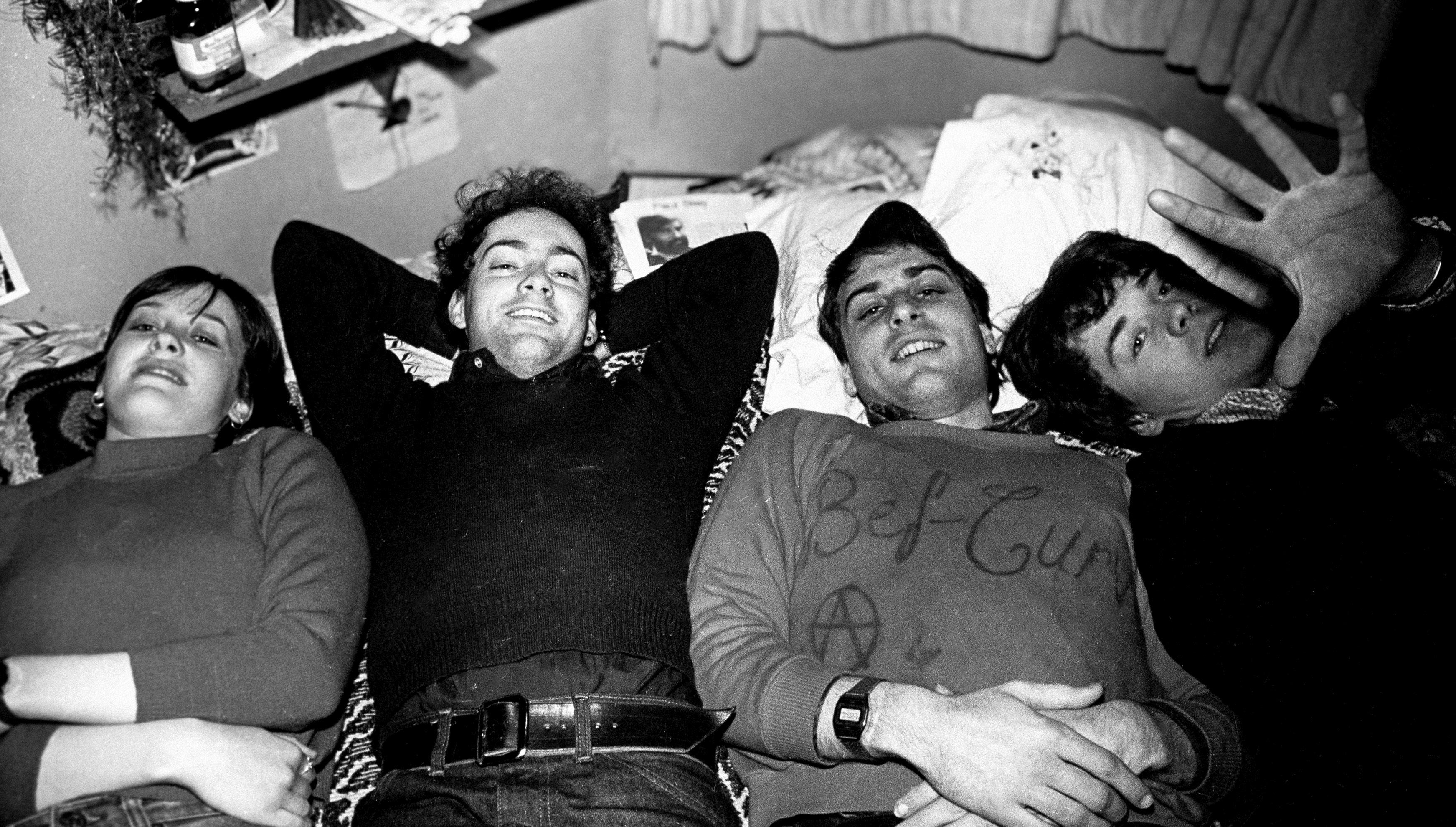
So, how are you going?
Very good. It is a while since I was asked how I was going versus how’ya doin’?
Where are you and how’s the weather?
I am in Brooklyn Heights, New York. We are in latespring here and the weather is mixed to be honest! When I first came here the winters were brutal and spring was a welcome change. Winters have become increasingly mild and snowless. The shift to spring is less dramatic.
What’s been keeping you busy recently?
Work is always busy – I am tech in finance, which I moved into after arriving here after The Chills folded. Outside of work, my son is entering university this year so between all his final high school year events, sports, college visits, and
admissions process, we’ve all been very busy! The good news is he has decided where is going. We now are contemplating what to do being empty nesters! Any time I get free I cycle with friends, play soccer in a league, or muck about with music. Oh, and walk our dog!
When you have visitors, where do you take them?
That depends what people want to do. There are many museums and galleries, parks, music, food (of any type), it is all here. When people visit it can motivate you to go to places you may have not been to for years. Locally, we are lucky to live in an historic part of New York City where just wandering the brownstone rowhouse neighborhood is enjoyable. The Brooklyn Bridge Park waterfront, Promenade, and the iconic Brooklyn Bridge are right there. If people have the
time, visiting the Hudson Valley, or going to the East End (Hamptons, Montauk, etc.) out of season, is beautiful.
What do you miss about New Zealand?
#1: People. Friends and family. Over the years I have come back less frequently, and I miss being able to spend time with everyone, especially those in Dunedin. When Bored Games recently came together to play at Jeff’s big birthday, I was sorely tempted to come, but could not pull it off – very disappointing. #2: The place – or specific places. The Otago Peninsula has always felt mystical to me. I miss the majesty of the Southern Alps; Mt Aspiring, Aoraki, and Arthurs Pass has always impressed me. #3: Food – I still crave for a decent tea room cheese roll!
Among the best known songs from the ‘Dunedin Sound’ of the 1980s, the Chills’ Pink Frost just turned 40 years old.
But while the 7” single was released in May 1984, the recording of the song had mostly taken place at The Lab studio in Auckland in mid 1982. Further work was done in early 1984, following the death from leukemia of drummer Martyn Bull.
The driving, sombre song peaked at No.17 in the local charts, and was placed at No.14 in the APRA Top 100 New Zealand Songs of All Time in 2001.
Pink Frost remains a favourite of fans of The Chills around the world. Among them are English journalist Martin Aston from The Guardian, who in 2009 wrote, “the Chills... series of brilliant singles included Pink Frost, a throbbing
ballad in the dark tradition of Joy Division.”
Former soundman and promoter Doug Hood was there when the song was recorded in 1982, and remembered it as one of the best moments of his recording career.
“Obviously with Martyn Bull, we knew that he wasn't well. All we got down was the rhythm track, not the vocal or anything like that. Then it was seven or eight months later finishing it off. Putting the vocals on it, and overdubbing a guitar track. That was pretty special, how it turned out. That was kind of the most well known Flying Nun record, the one that captured people's attention overseas. The NME raved about it, and John Peel at the BBC had his ears pricked up.”
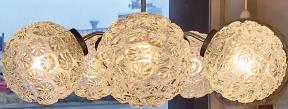
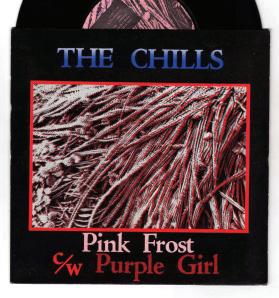





What small part of Dunedin history has a permanent home at a museum in Maine, USA?
At the Seashore Trolley Museum in Kennebunkport you’ll find the No. 105 cable car that once plied Dunedin’s hills.
While later in its life it serviced the Mornington line up High Street, the grip tram ran mostly on the short but terrifying Maryhill extension.
Considered by some the ‘‘world’s steepest public tramline’’ because of its 1 in 3.75 gradient, the line was nicknamed ‘The Big Dipper’ due to the sudden drop from the Mornington cable car house onto Glenpark Avenue. Legend has it that local children would routinely gather to hear the screams of unsuspecting passengers at the outset of the half mile trip.
Terminating at the Glenpark Ave/ Mitchell Street intersection on the
other side of the valley, the Maryhill extension opened in March 1885two years after the Mornington line. A fixture of Dunedin’s transport network, the line was eventually closed in October 1955. The No. 105 car was used on the Mornington service until that was also closed in 1957, while the No. 106 car was donated to what is now Toitū Otago Settlers Museum, where it still resides.
You can wake you up. (John Lennon) America was created by philosophy. (Margaret Thatcher) One martini is all right. (James Thurber) Every winter has its spring. (Hudson Tuttle) Be less critical more often. (Oblique Strategies by Brian Eno & Peter Schmidt)
1. A Trans Am was central to which filmed in the south movie from 1985?
2. Which latitude runs just north of Cromwell?
3. Country singer Dusty Spittle hailed from which town?
4. During what year did the Homer Tunnel open?
5. Kaka Point was the long-term home of which Poet Laureate?
6. Foreskin’s Lament writer Greg McGee was born in which town?
7. What was introduced to Fiordland in 1905?
8. Which prolific Silver Ferns captain was born in Invercargill in 1973?
9. The video for which Look Blue Go Purple song featured Signal Hill?
10. Which construction company started work in Dunedin in 1909?
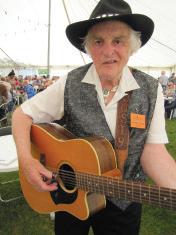
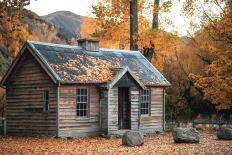





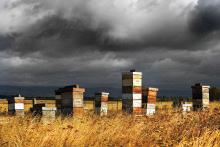




store.odt.co.nz



